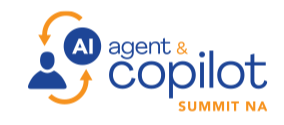
The launch of GenAI in late 2022 touched off a remarkable wave of innovation that has quickly morphed into a focus on AI agents that can perform tasks independently.
In so doing, agents are bringing to bear new functionality that wasn’t available previously, despite the much-touted benefits of GenAI. Specifically, GenAI and its predecessor, traditional AI, required clear instructions from people; each type is unable to reliably perform complex reasoning or operate effectively in a setting that requires teamwork.
Agents, by contrast, know how to learn, they can reason, and they adapt and make decisions, which makes them vastly more powerful than AI tools that came before them. “AI agents really mimic us as humans and our cognitive processes, which allows them to think dynamically and be able to accomplish goals on their own,” says Dorit Zilbershot, group vice president of AI experiences and innovation at ServiceNow, in a roundtable discussion with Cloud Wars analysts on Agentic AI and ServiceNow’s strategy.
“This is another transformation in how we redefine productivity across the enterprise,” Zilbershot adds.
Transformation enabled by AI agents couldn’t come at a better time, based on a confluence of factors placing unique pressures on business and tech leaders: the need to move faster than ever due to the pace of change in business, the need to leverage data for the best decisions, and workforce constraints including hiring and skills development, Cloud Wars founder Bob Evans said during the discussion.
Agents Work Together — And With Humans
Under ServiceNow’s Agentic AI vision, agents work together behind the scenes to complete complex tasks using information stored in a variety of systems. “One AI agent can find and prioritize information. Another one will be able to reason and be able to understand what systems to access to take actions,” Zilbershot says.

AI Agent & Copilot Summit is an AI-first event to define opportunities, impact, and outcomes with Microsoft Copilot and agents. Building on its 2025 success, the 2026 event takes place March 17-19 in San Diego. Get more details.
That’s a lot to coordinate, so those agents need a manager, which is embodied in an agentic orchestrator that ensures the agents are working together, handing off work smoothly, and managing exceptions, among other functions.
Orchestration also solves for the decentralized, even siloed, nature of AI agents that lack a holistic understanding of business context, such as how tasks are interconnected within a larger organizational process. Orchestrators function like a manager or conductor that coordinates the actions of the individual agents to keep an enterprise running smoothly.
AI in all its forms has long raised fears about a negative impact on people’s jobs and the potential downsides if there’s a lack of human oversight. Under ServiceNow’s strategy, humans retain strong oversight of the AI agents or what Zilbershot refers to as “humans on the loop.”
“All of us are really becoming a manager in the future. This means that the AI agents will be doing all the routine, repetitive, time-intensive tasks, while we as humans really focus on high-level strategy, creativity, problem-solving and that collaboration between agents under that AI orchestration,” Zilbershot explains. This means that “we’ll need to now learn how to collaborate with the AI agents.”
The evolving nature of the human-software relationship also underscores a requirement for virtually all AI implementations: the need to focus on organizational change management and, more specifically, how AI impacts the organization, as well as people’s relationship with technology.
Agents Multiply ServiceNow Value
Given its expansive footprint within enterprise customer organizations, which rely on the ServiceNow platform to manage a wide range of automated workflows, adding agents into the mix should expand the platform’s contributions to business outcomes.
“Customers already created a lot of content and a lot of actions and a lot of workflows, and so immediately those AI agents become a value multiplier of the ServiceNow platform because you can just get them to work on day one,” Zilbershot says.
In addition, ServiceNow offers a broad, deep ecosystem that positions it well to drive agentic AI forward. This includes an expansive set of internally developed functionality – workflows, search, reasoning, orchestration – plus a range of industry partnerships that connect ServiceNow-driven workflows to widely used enterprise applications.
Zilbershot cited partnerships with Microsoft and NVIDIA as prime indicators of that robust ecosystem, underscoring the capacity for various systems to work together on agentic workflows. Wayne Sadin, CIO of PriceSmart, said that approach ensures customers have “optionality” that provides both robust functionality and flexibility as they carry out their AI strategies.
Success Drivers
Zilbershot and the Cloud Wars analyst team laid out key factors that will enable companies to realize big dividends with their AI and agentic ambitions by nailing their strategy and tactics.
First, as companies embark on agentic AI, it’s vital that their approach focuses on reimagining the way they do things. “This is an opportunity to accelerate the growth of the company, not just eke out another 2% of margin which, I think, is a complete misuse of some of these remarkable technologies,” says Pipeline360 CEO Tony Uphoff.
One way to ensure that mindset: CEO-level support of the message that AI is a driver of strategic business benefits. “This has to be something driven by CEOs,” Evans says, to deliver and reinforce the message that AI is much more than widely hyped technology. Rather, AI and agentic AI are poised to truly reinvent the way businesses operate while improving their engagement with partners and customers.
Casting agentic AI in a retail industry context, Sadin says it could help his company be responsive to diverse sets of conditions that impact revenue and other business drivers. Examples of such conditions include a holiday that means a given club is closed or sales are higher than expected. “What if I can start telling the agentic AI about some of these conditions and, as it learns more, it makes better and more decisions, and then I can free people up to go make the next set of decisions,” Sadin says. “Before you know it, you’ve got a whole bunch of parts of the process talking to each other. That’s the vision.”
A great vision indeed, but before delivering on scenarios like that, Zilbershot has some other advice for how customers should get started: think about small-scale deployments, where you know agents can have a significant impact by automating what ServiceNow execs commonly refer to as “soul-crushing” work — like requesting new computers or completing expense reports.
“When you start small, you get comfortable with the technology, you better understand its limitations as well as the benefits, and it’s easier to build a strategy of how to integrate that into the workplace and how to educate employees on this technology,” she says.
Start small, but think big in terms of opportunities, growth, and use cases. That’s a powerful agentic AI plan for 2025.









